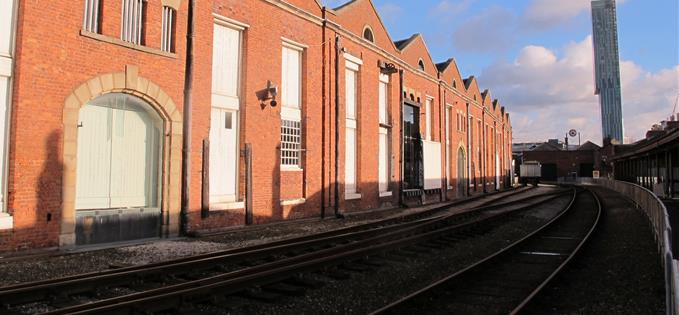CONFIDENTIAL understands Mark Whitby is to make another judicial challenge to the Ordsall Chord. This will be the third challenge.
This is the place where the modern world began
In October the former president of the Institute of Civil Engineers, Mark Whitby, lost the most recent legal objection to the construction of Network Rail's Ordsall Chord project. All commentators thought that was that, the battle was over. But no, Whitby will fight on.
The Ordsall Chord will be a 1km section of new track to the north west of Castlefield Junction, in the vicinity of Ordsall. This will link the Castlefield Junction line with the Deal Street Junction line, connecting Manchester’s two main stations, Victoria and Piccadilly, for the very first time. It will involve the construction of a new viaduct and open up connections east and west across the 'Northern Powerhouse' region.
Figures of 30,000 new jobs and £4.6bn of wider economic benefits have been quoted as flowing from the improved rail infrastructure. These are hard to argue with even if they only prove 25% accurate. The scheme was orginally quoted as costing £600m.
But there's a problem.
The scheme will smash through the 1830 Liverpool and Manchester Railway (LMR) lines at the western end of the Museum of Science and Industry site and put the Grade I listed George Stephenson designed viaduct which crossed the river here into the literal shade (click here for an article on the significance of this structure).
 Oldest in the world
Oldest in the worldLMR was the world's first passenger rail system and began the Railway Age. The complex of rail buildings and structures at this site are thus the oldest in the world.
Campaigners against the proposed route support the Ordsall Chord but want it to take a different trajectory that wouldn't sever the link between the existing rail network and the station complex.
As Andrew Davison, Principal Inspector of Ancient Monuments in the North West, has stated during the long battle with Network Rail and Manchester City Council: 'This is the Stonehenge of railway history. This is not just a place that has potential to hold more than national significance in relation to railway history this is the place where the modern world began."
Mark Whitby argues the proposed route would “substantially harm the city’s heritage” and destroy an area of “international importance”. He also claims that the decision to allow permission for Network Rail’s route was based on 'incorrect assumptions'.
Confidential is of the opinion that if an alternative route can be found that does not destroy the integrity of a priceless heritage asset then it should be taken. Whitby reckons the alternative he has suggested would add £20m to the cost of construction. Meanwhile at Confidential we have always scratched our heads over why the huge tourism potential of this site has never been properly exploited. We discussed that crazy tourism omission here.
Figures out this week reveal more than 600,000 visitors went to the Museum of Science and Industry last year. There are plans to celebrate the first true railway appropriately in the coming years at the museum, helped with a £3m sweetener from Network Rail to buy off museum objections to the project. It seems perverse to irreparably damage an assest the city should be cherishing.
Manchester and the North has survived without an Ordsall Chord for 185 years since the city, alongside Liverpool, kicked off the Railway Age. Of course the Ordsall Chord is necessary, but a pause in construction while a less destructive solution is sought seems sensible.
 The oldest passenger railway viaduct in the world in Castlefield
The oldest passenger railway viaduct in the world in Castlefield













